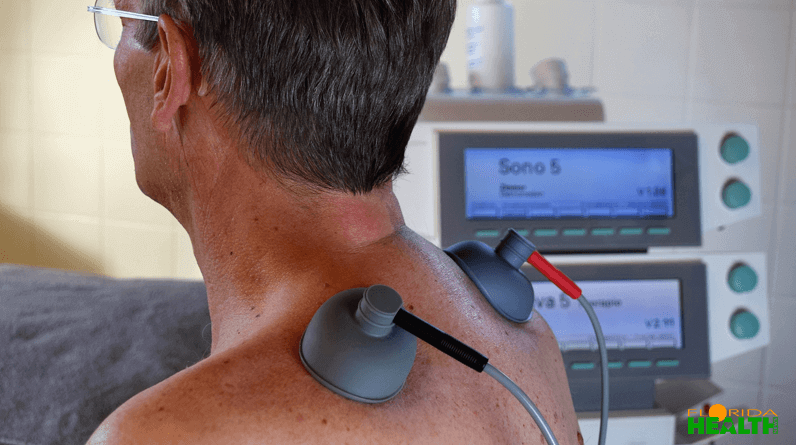
Fibromyalgia is a condition in which you suffer from chronic pain in your muscles and connective tissue. This pain is often associated with stiffness, fatigue, sleep disorders, and mood swings. Your symptoms often change, which means that you have more symptoms one day than the next.
With fibromyalgia, there are no abnormalities in your muscles or connective tissue. There is also nothing else in your body that can explain the disorder. The cause is still unknown. Fibromyalgia is therefore very difficult to determine. There are no drugs to cure the disorder. However, your symptoms can be reduced with painkillers and a combination of movement and rest.
How Does Fibromyalgia Start?
It's unclear what causes fibromyalgia. In people with fibromyalgia, there are no abnormalities in the muscles, connective tissue, or joints. However, there are theories that try to explain the cause of the disorder.
Controlled by the brain
There are indications that fibromyalgia may be related to the way the brain controls your muscles. Normally, the brain, along with certain hormonal glands, controls your muscles. In people with fibromyalgia, this cooperation would be disturbed. What would cause this disruption is unknown. It is also not clear whether this disturbance is a consequence or a cause of fibromyalgia.
Stimulus selection
Another theory about fibromyalgia is that it has something to do with the mechanism by which stimuli from the outside world are filtered. In people with fibromyalgia, this filter would not work properly.
Processing painful stimuli
It could also be that the processing of pain stimuli in people with fibromyalgia is different than in people without fibromyalgia.
What Are The Symptoms Of Fibromyalgia?
Common complaints in fibromyalgia are:
- Chronic fatigue
- pain: often in your back, neck, shoulders, sternum, side of your hips or on the inside of your knee.
- Stiffness: usually in the morning, so-called morning stiffness. You are also often stiff when you have been sitting or standing for a while.
- Loss of strength in your muscles: because of this you have more difficulty with certain actions, such as carrying bags when shopping or sitting down and getting up again.
- Sleep problems: sometimes you don't get to sleep well. Sometimes you do sleep, but you often wake up because of the pain.
- Mood complaints: complaints that occur regularly:
- fears
- depressive feelings
- concentration difficulties
- forgetfulness
- struggling to make decisions
Other complaints
- a heavy feeling in your arms or legs
- tingling in your arms or legs
- burning or diminished sensation in your skin
- headache
- intestinal cramps, abdominal pain
- swollen fingers
Climate
Some people have more complaints when the temperature changes or when it gets cold or humid outside. The climate itself has no influence on the development of fibromyalgia: it occurs in both hot and cold regions and anyone can get it. During the holidays, however, the complaints often diminish, perhaps because you get more rest and are more relaxed.
How Is Fibromyalgia Diagnosed?
There is no gold standard to confirm the diagnosis of fibromyalgia. A rheumatologist recognizes its symptoms and can usually rule out other causes of the symptoms. The fibromyalgia score offers help in this respect.
When is more testing required?
When your doctor has doubts about the diagnosis, he chooses for an additional examination. This can be, for example, an X-ray or a blood test. With fibromyalgia, additional tests such as blood tests or X-rays don't show any abnormalities.
When does your doctor start thinking about fibromyalgia?
- You have chronic pain, in three or more places in your body.
- These places are both above and below the waist and both left and right in your body
- You suffer from pain and stiffness for more than 3 months
- You suffer from long-term complaints such as tiredness, problems with your concentration, changing moods, or not waking up rested
The fibromyalgia score
The fibromyalgia score is a sum of the pain score and the symptom score. The fibromyalgia score can range from 0 to 31, depending on the degree and intensity of your symptoms. In any case, fibromyalgia is mentioned if you score at least 12.
The pain score
By measuring the pain score, your doctor looks at which areas you have experienced pain in the past week. There are nineteen areas that participate in the score. Each painful area scores 1 point. If you have no pain anywhere then the pain score is 0, if you have pain everywhere then the pain score is 19.
The symptom score
The symptom score charts the following complaints:
- Fatigue
- Wake up restless
- Difficulty thinking and concentrating
- Here, too, your doctor will look at your complaints from the past week together with you
The scoring here is as follows:
- 0 = absent
- 1 = slightly or mild, mostly or intermittently
- 2 = in moderate to a significant degree: frequently present and/or of considerable severity
- 3 = to a serious extent: drastic, continuously disruptive to life
Additional Score Symptoms
Your doctor will also look at what additional symptoms you have. This is done on the basis of a list of 42 physical symptoms. The score for this is:
- 0 = none of these symptoms
- 1 = few of these symptoms
- 2 = significant number of these symptoms
- 3 = many of these symptoms
The total symptom score is a sum between the severity of the 3 symptoms and the additional symptoms. The score is between 0 and 12.
How Does Fibromyalgia Progress?
Fibromyalgia is different for everyone. Symptoms vary greatly from person to person. Maybe your symptoms diminish after a while, but they don't always disappear altogether.
Which Treatments Can Help You?
There's no treatment that cures fibromyalgia. However, you can do something about the symptoms, for example with physiotherapy, exercise, and painkillers. Good sleep is very important because it is known that pain symptoms get worse when you don't get enough sleep. Guidance is also available so that you learn to deal with the symptoms better.
Medication
There are no drugs for fibromyalgia. Your doctor will prescribe medication for your symptoms if necessary.
Common medications are:
- Paracetamol (possibly with the addition of codeine or caffeine). Paracetamol is the most commonly used painkiller for fibromyalgia. If you use paracetamol with codeine you have a risk of constipation and reduced responsiveness.
- Tramadol belongs to the group of morphine-like painkillers (opioids). It has a strong analgesic effect. The most important side effects are drowsiness and constipation.
- Inflammatory painkillers (NSAIDs).
Other medications
- Amitriptyline is originally a medication for depression. But doctors also prescribe it for pain caused by fibromyalgia. With fibromyalgia, you get a lower dosage than for the treatment of depression. Amitriptyline reduces the pain, but it can sometimes take up to 2 to 4 weeks before it is effective. It also often helps against sleeping problems in patients. Side effects include dry mouth, constipation, confusion, and drowsiness.
- Drugs from the group of benzodiazepines, are sleep and sedatives. The drugs from this group work muscle relaxing, soothing, and make you drowsy. Use sleep-inducing medication and sedatives as short as possible. If you use the medication for a longer period of time, your body will get used to it too much. You become dependent on it. You may also suffer from side effects such as drowsiness, reduced responsiveness, and a greater appetite.
If you want to buy medication without a prescription, always consult your doctor first.
Treatments
To treat fibromyalgia, see your doctor. Sometimes people with fibromyalgia come to the rheumatologist to make or confirm the diagnosis.
If the symptoms are serious, you sometimes get a referral for a rehabilitation program. During such a program you will have to deal with various health care providers who will help you to deal with fibromyalgia more easily. For example, the physiotherapist, the rehabilitation doctor, the psychologist, or a social worker.
Complementary treatments
There are many types of alternative treatments. Sometimes people with a rheumatic disorder notice a positive effect. Always consult your doctor before starting any alternative treatment because it may cause side effects or may interact with the medication you are taking.
Disclaimer
This article is made available for the purpose of providing helpful information to visitors. This guide has no therapeutic or diagnostic value. Finally, the information in this guide is not intended to replace services, information or data provided by doctors, specialists or other qualified and professional persons.

Carl Riedel is an esteemed online researcher and writer, specializing in the intersection of technology and wellness. As a member of the International Association of Therapists, Carl brings a unique perspective to his work, skillfully integrating insights from therapy and digital trends. His articles help readers navigate the complexities of the digital age with an emphasis on promoting mental and emotional well-being.


